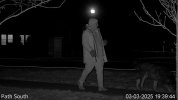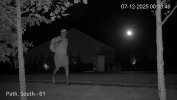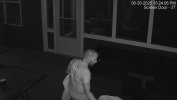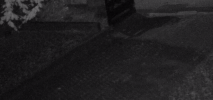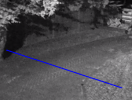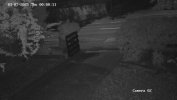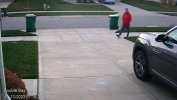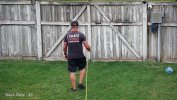So I have 2x Hikvision IP cameras currently covering a specific area. 1 is a DS-2CD2325FWD-I, with the 2.8mm lens, and this is a great overview camera, but, as you would expect, and especially since it is mounted quite high, it is no good for anything beyond Observe or maybe Recognize in the DORI model.
I then later added another camera at a different angle, a DS-2CD2H43G1-IZ, pointing directly down the driveway. I will admit, I installed these cameras before I had a good enough understanding of sensor sizes, exposure times, and other parameters which are key to getting good images, especially at night. Also, both of these cameras were obtained 2nd hand at a great price, so it was a case of the camera being 'available' rather than 'optimal'.
The second camera is mounted quite high as well, but I was hoping that since it is a varifocal with a max. zoom of 12mm, this would make up for the height to some extent, and I think it has - during the day, I can get reasonable face-captures of people coming down the driveway, although not perfect - however ironic it may seem, I have blurred the faces in this image, but you should get a good idea from the rest of the image:
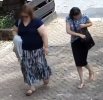
(Obviously only a snip of the whole frame)
However, at night the situation is far worse. I cannot expect great low-light performance, since this camera uses a 1/3" sensor, which for 4MP, is far too small (so I have learned). I will collect some captures to display, but in short, the nighttime image is dark, grainy, and face captures are pretty much useless. The settings in use are as follows:
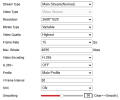
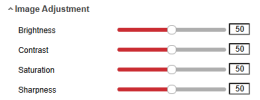

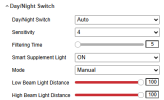

I am pretty sure 1/25 shutter speed is too slow, and is causing motion blur - however, faster shutter speeds make the image even darker and more useless.
Interestingly though, the more I zoom out, the brighter the image becomes - less useful, as the lack of zoom means perps are too far away, but brighter all the same.
I will hopefully post some more details soon (distances, nighttime images), but I suppose my questions are as thus:
1. Why does lowering the zoom make the image appear brighter?
2. Are there any tweaks I can make to squeeze a little more useful performance out of this camera?
3. Does anyone have a recommendation for a replacement? (probably be easier to answer once I provide more detail). Budget is limited here unfortunately
I then later added another camera at a different angle, a DS-2CD2H43G1-IZ, pointing directly down the driveway. I will admit, I installed these cameras before I had a good enough understanding of sensor sizes, exposure times, and other parameters which are key to getting good images, especially at night. Also, both of these cameras were obtained 2nd hand at a great price, so it was a case of the camera being 'available' rather than 'optimal'.
The second camera is mounted quite high as well, but I was hoping that since it is a varifocal with a max. zoom of 12mm, this would make up for the height to some extent, and I think it has - during the day, I can get reasonable face-captures of people coming down the driveway, although not perfect - however ironic it may seem, I have blurred the faces in this image, but you should get a good idea from the rest of the image:

(Obviously only a snip of the whole frame)
However, at night the situation is far worse. I cannot expect great low-light performance, since this camera uses a 1/3" sensor, which for 4MP, is far too small (so I have learned). I will collect some captures to display, but in short, the nighttime image is dark, grainy, and face captures are pretty much useless. The settings in use are as follows:





I am pretty sure 1/25 shutter speed is too slow, and is causing motion blur - however, faster shutter speeds make the image even darker and more useless.
Interestingly though, the more I zoom out, the brighter the image becomes - less useful, as the lack of zoom means perps are too far away, but brighter all the same.
I will hopefully post some more details soon (distances, nighttime images), but I suppose my questions are as thus:
1. Why does lowering the zoom make the image appear brighter?
2. Are there any tweaks I can make to squeeze a little more useful performance out of this camera?
3. Does anyone have a recommendation for a replacement? (probably be easier to answer once I provide more detail). Budget is limited here unfortunately

